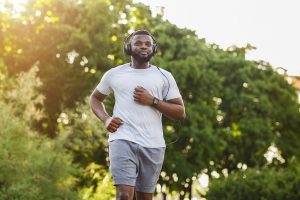 If you walk into any gym, surely you will encounter someone doing a ‘squat’ exercise. Look away as most people are doing it wrong. The squat seems pretty simple, but it’s not. Performing the squat is not merely widening your feet, bending your knees. Doing the squat incorrectly can do damage to the knees, ankles and back. The squat added with weights can be a great whole body exercise that can be extremely effective, but you must be wise about it.
If you walk into any gym, surely you will encounter someone doing a ‘squat’ exercise. Look away as most people are doing it wrong. The squat seems pretty simple, but it’s not. Performing the squat is not merely widening your feet, bending your knees. Doing the squat incorrectly can do damage to the knees, ankles and back. The squat added with weights can be a great whole body exercise that can be extremely effective, but you must be wise about it.
As with most exercises, it is important that your joints are aligned. In my Pilates practice, we stress joint alignment a lot. Not only does proper alignment protect the joint; it allows you to get the greatest benefit from the exercise.
There are two basic leg positions: parallel legs and externally rotated legs.
External Rotation
Stand with the legs wide and rotate the upper bones of the legs (the femur) outward in opposite directions. The right leg bone will rotate clockwise and the left femur will rotate counter clockwise. The knees and ankles should not rotate further or less than the femurs. Your hip joint, knee and ankle should be in alignment. If this is difficult for you to do, you likely have tightness in one or all of these joints. Start with a smaller stance. The squat should initiate from the abdominals and the gluteals and not by simply bending at the knees. Keeping your lower abs pulled in, press firmly and evenly into the ground with your heels and toes and reach your bottom down and back without shifting your knees past the line of the ankle joint. The knees will ‘appear’ to shift forward because they are bending. Your torso should stay as tall as possible. In theory your shins should stay fairly perpendicular to the floor. You will need to keep your abs pulled in a lot in order for the action not to cause strain in the lower back. While you perfect this you can extend your arms forward at shoulder height. Remember to keep the shoulders back and down. As you get better, you can add hand weights or a light medicine ball and add some lowering and lifting of the arms. As you extend the legs, focus on the abs pulling in, but also contracting the glutes and inner thighs evenly to maintain your joint alignment. Visualize extending the legs from the glutes and not the feet. To get the most out of the squat inhale down for a count of five and up for a count of five. Slow and steady wins the race!
Parallel
In this version of the squat, your legs are hip [the bones, not any extra mass we might have on the sides] distance apart. Again, your hips, knees and ankles should be aligned in the standing position. This position is the toughest to keep the shins perpendicular to the floor without falling backward. I usually have my clients extend their arms forward at shoulder height or hold weights when performing this version. Imagine that you are going to sit in a chair-so you are reaching your bottom back and down. Again, a very important part of the squat is to keep the abs in and the torso lifted. Just as you did in the wide leg squat, you will want to contract the glutes and inner thighs evenly to maintain your joint alignment. The slower you go the more effective this move will be.
Overall, the squat is one of the single best moves you can do. It works the glutes, hamstrings, quads, inner thighs, outer thighs and core. If you add a small amount of weight you will wok the upper body as well. It’s pretty perfect.
So there’s no excuse not to get down!
Jessica Kuiken is a Los Angeles based Pilates instructor. Follow her on Twitter and Facebook and Instagram

















